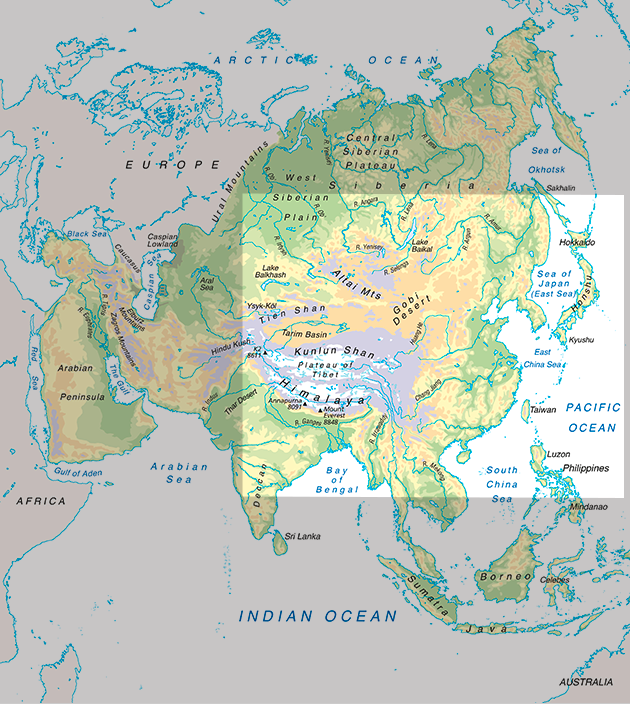
East Asia
The region of East Asia covers about 12 million square kilometres (over 25%) of Asia. China – the world’s most populous country – is central to the region. There are great physical contrasts within this region, from the Himalaya, the highest mountains in the world, and the vast high Plateau of Tibet, to the Gobi and the deserts of western China. A large, curving archipelago lying off the coast of Eastern Asia makes up Japan. This consists of the large island, Honshu, and to the south are Kyushu and Shikoku (separated from Honshu by the now-bridged Inland Sea). To the north is Hokkaido, connected by a long rail tunnel. The islands are volcanic and the region is prone to earthquakes and tsunamis. Situated between Japan and China the mountainous Korean Peninsula, which extends over 1000 kilometres into the Pacific Ocean, has been split politically between North Korea and South Korea since 1948.
The density of settlements in the eastern half of China contrasts sharply with the relatively sparsely inhabited western areas of Tibet and Xinjiang, and the north of the country adjacent to Mongolia. Two of Eastern Asia’s great rivers are in this region: the Chang Jiang (Yangtze) and the Huang He (Yellow River). The Chang Jiang river is home to the controversial Three Gorges Dam: the world’s largest hydropower project.
Japan is a densely populated country and its capital city, Tokyo, is the largest metropolitan area in the world with over 30 million residents. It is a major economic power, one of the world’s largest importers and exporters and a leading nation in scientific research and the manufacture of electrical goods.